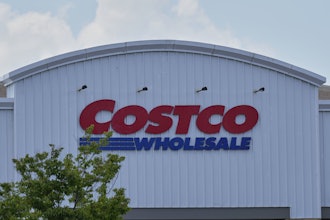
In industrial settings, noxious airborne contaminants from a variety of sources can jeopardize indoor air quality, compromising worker health, productivity and even regulatory compliance unless the air is sufficiently purified when ventilation alone will not solve the problem.
Welding, plasma cutting or combustion processes including engines and generators can produce noxious smoke and exhaust gases. Fugitive emissions can include fumes in chemical processing as well as dusts and trace metals in metallurgy.
Industrial solvents can contain chemical aromatics like benzene, toluene or xylene. Spraying paint or other substances can leave chemical mists suspended in the air. Various processes and cleaning routines can release a complete spectrum of often harmful VOCs.
Regulatory agencies like the Occupational Safety and Health Administration (OSHA) set permissible exposure limits for many toxic substances and the National Institute of Occupational Safety and Health (NIOSH) also sets indoor environmental quality standards, which includes air quality.
 LakeAir air purifier in industrial setting.LakeAir
LakeAir air purifier in industrial setting.LakeAir
To effectively protect industrial workers, productivity and compliance, one solution is to install “smoke eaters,” advanced air purification systems that filter large volumes of air quietly to remove smoke, air contaminants and even odors.
In doing so, the contaminated indoor air is passed through a series of sophisticated filtration media that eliminate harmful particulate before the cleansed air is released back into the work environment.
“By providing cleaner air and removing irritants and potential toxins, industrial personnel can not only breathe easier, but also work more productively. The approach can help to improve long-term employee health, absenteeism and retention, which are important concerns in today’s tight labor market,” said Randolph Bush, owner and President of LakeAir, a Racine, WI-based manufacturer of industrial, commercial and residential air filtration systems since 1968.
Recently, a growing number of manufacturers and industrial processors have sought to purify their indoor air with advanced “smoke eater” air filtration.
Because the requirements can vary considerably, companies like LakeAir consult with the manufacturer to determine the best air filtration based on the application, physical layout, square footage, as well as the expected number and volume of “smoke” generating processes at the jobsite.
“Differences in particulate size, type and the desired number of air exchanges per hour, as well as other factors should be considered,” said Bush.
According to Bush, one of the most versatile commercial air purifiers for industrial applications utilizes multiple stages of filtration to remove 97% of particulate down to .01 microns and cleans up to 2,000 cubic feet per minute of indoor air.
First, a prefilter catches larger debris in the airstream like bigger pieces of dust or particulate. Next, comes two separate electrostatic cells, each with two stages of electrostatic air purification.
In the first stage, the smoky air is drawn through the particle ionizer. Here, the smoke in the air is given a negative charge. The second stage is a collection plate, where the charged particles of smoke and contamination are attracted to each plate and trapped.
The contaminants remain on the filter plates until they are removed when the filter is washed.
Finally, an activated carbon filter traps any remaining contaminants as well as odor molecules by adsorption inside the pore structure of the carbon substrate. After passing through the commercial filtration systems, purified air flows back out into the indoor work area.
“Manufacturers benefit from a longer filtration section because the longer the particles are filtered, the more likely they are to be trapped,” said Bush.
He notes that the commercial air purifier’s filtration section is 10-inches thick, including the dual electrostatic cells that provide over 26,000 square inches of collection area for contaminated particles.
 LakeAir industrial air purifier.LakeAir
LakeAir industrial air purifier.LakeAir
The compact dual cell design allows more air change cycles for the available space than other technologies while keeping operational noise to a minimum.
According to Bush, the air purification units are often used in industrial settings like welding rooms, paint prep areas, machine shops and manufacturing floors. To suit the specific design of the room, the units are typically hung from the ceiling by chains or mounted to a wall.
In terms of reliability, the electrostatic cells in the industrial air purifiers are built to last with non-corrosive materials.
“Some of our cells have been in service for more than 30 years,” said Bush.
The air filtration units are made in America with heavy-duty, all-steel construction for durability.
As industry seeks to safeguard worker health and increase productivity, the use of advanced smoke eater air purifiers that continuously cleanse indoor air will become more prominent.
The ability to tailor the air filtration system to accommodate the manufacturer or processor’s specific needs will increase its adoption across an even greater range of applications.
---
Del Williams is a technical writer based in Torrance, California.






















